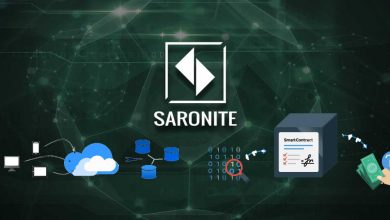Solaris (XLR – XEVAN) – Solaris wallet setup and Solaris mining guide
Are you confused on what to mine currently as almost all coins seem to give same return? Why not try mining Solaris (XLR) crypto currency. Even though Solaris is a year old coin it’s still a decent currency with active development team. Here we’ll see how to setup Solaris wallet? Also we’ll guide you on how to mine Solaris coin using NVIDIA and AMD GPU? Along with that we’ll also share a video guide that explains Solaris Masternode setup. There are many reasons to mine or buy Solaris coin at this time.
- There are only 25 more days to go for Solaris coin to enable Proof of Stake and Zerocoin protocol.
- When Zerocoin protocol is implemented proof of work phase will end so you only got few more days to mine Solaris after which PoS and Masternode will take over.
- It is one of the top privacy coins that gives users an option to make transactions anonymously.
- This is one of the top and affordable masternode coin that gives stable return and has a bright future. Currently there are 650 masternodes that is more than 60% of Solaris supply has been locked making the network rock solid.
- Solaris team is also building a next generation crypto currency exchange called txbit which will support all major crypto currencies and tokens. During the launch of txbit Solaris holders will greatly benefit from this.
So what are you waiting for? Let’s setup Solaris wallet and start mining XLR today. Before that we’ll make a short note on Solaris coin.
Solaris (XLR) – PoW / PoS / Masternodes
 Solaris (XLR) is a decentralized coin which was launched on March of 2017 with Nist5 algorithm initially which then replaced by XEVAN algorithm on October 2017. Xevan hashing algorithm is a combination of x17 algorithm with 128 bit extension. Xevan algorithm was founded by Bitsend developers and it is proven to be ASIC resistant, stable and efficient hashing algorithm.
Solaris (XLR) is a decentralized coin which was launched on March of 2017 with Nist5 algorithm initially which then replaced by XEVAN algorithm on October 2017. Xevan hashing algorithm is a combination of x17 algorithm with 128 bit extension. Xevan algorithm was founded by Bitsend developers and it is proven to be ASIC resistant, stable and efficient hashing algorithm.
Solaris is currently priced at $8.03 USD (0.00088643 BTC) a coin with a market cap of $8,870,402 USD (979 BTC). Its circulating supply is 1,104,713 XLR and total supply is 1,254,414 XLR. Ok, let’s see features of Solaris coin and its technical specifications before getting into wallet and mining guide.
Also read: Difference between circulating supply, total supply and max supply.
There are many unique features Solaris has such as:
- Zerocoin protocol – A privacy feature which gives an option for users to transact XLR anonymously.
- Instant Send feature which by using SwiftTX allows transactions to be confirmed instantly.
- Masternodes that ensures the network is decentralized completely.
- Solaris uses Xevan mining and spork algorithm which is ASIC resistant.
- Seesaw rewards system – Adjusts block reward dynamically to promote even ratio between masternode and staking nodes in the network.
Solaris Coin Specifications:
Algorithm: XEVAN hashing algorithm
Block Time: 60 Seconds
Difficulty Adjustment: Adjusts each block using Dark Gravity Wave
Coin Type: Proof of Work, Proof of Stake and Masternode
Masternode requirements: 1000 XLR
PoW: Ends on block 259200 which is expected by April 2018
PoS: Starts once the PoW ends that is at block 259201
Dark send: TX Obfuscation
Max coin supply: Infinite
At the end of the year 2018 there will be 1,617,000 XLR circulating. After that it will increase by 130,000 XLR every year.
Solaris Wallet setup guide
Solaris wallet is available for Windows, Linux, Raspberry and Mac. In addition to this they also have a web wallet, however to have complete control we recommend you to use the desktop client. Recently they released a mandatory wallet update v2.5.0.0 which has number of fixes and improvements. If you have the wallet setup already then make sure its updated to v2.5.0.0.
To update your wallet all you have to do is just replace the previous QT wallet version with the new one.

For people who are new and looking for a guide to setup Solaris (XLR) wallet, here is how to setup.
Step 1: Download the latest wallet release from Github page.
Step 2: Extract the wallet file to desired location and open it.
Step 3: Upon opening for the first time it will ask for directory location to store the wallet and blockchain files.
Step 4: Follow the onscreen instructions to complete the Solaris wallet setup.
It’s like Bitcoin core wallet so all the features and functionalities are same. Some additional features which you can find in Solaris wallet are: Multi signature creation, BIP 38 Tool, Multi-send, Privacy and Masternodes.
How to mine Solaris (XLR) coin – XEVAN PoW – NVIDIA and AMD
To get started with mining Solaris first we’ll need a wallet address. Hope you have your XLR wallet address ready.
Next we’ll need a miner for NVIDIA and AMD GPUs. CPU mining is not recommended anymore due to high difficulty.
For NVIDIA graphic cards download the ccminer/krnlx-xevan which can be found here. For AMD cards download SG Xevan miner which can be found here.
The wallet address and miner is ready. Now we need to configure the miner to a pool and start mining Solaris.
Solaris Mining Pools:
You can mine Solaris at the following pools:
https://pool.coin-miners.info/
https://cryptohub.online/pools/
https://umine.org/
http://bsod.pw/
http://miningpool.shop
Here in this guide we’ll use umine.org as an example since the fees are too low compared to other pools.
Solaris Miner Configuration:
NVIDIA: In ccminer folder create a new text file and paste the following code.
ccminer.exe -a xevan -o stratum+tcp://s.umine.org:3739 -u YOUR_WALLET_ADDRRESS -p c=XLR
Once done save the file as start.bat and run the miner. It should connect to the pool and start mining XLR. You can check the mining report at umine.org.
AMD: For AMD GPUs use the following code and make sure to change the wallet address.
sgminer.exe –algorithm xevan -o stratum+tcp://s.umine.org:3739 -u YOUR_WALLET_ADDRESS -p c=XLR
Solaris Masternode Setup Guide
Looking to setup Masternodes? Here is a easy to follow Solaris Masternode setup tutorial on VPS.
Where can I buy Solaris (XLR)?
You can purchase Solaris coins from coinexchange.io by trading BTC.
Link: https://www.coinexchange.io/market/XLR/BTC
Hope we’ve shared enough information to get started with Solaris coin. If you have any questions or concerns regarding wallet or Solaris mining then please do comment. For more updates do follow us on Facebook and Twitter.





Some time ago I created a Solaris wallet using username and password. But today, when I tried to login, 2FA was mandatory. But I do not have any 2FA for Solaris. Probably, I created the account before 2FA was mandatory.
How can I login to my account now?